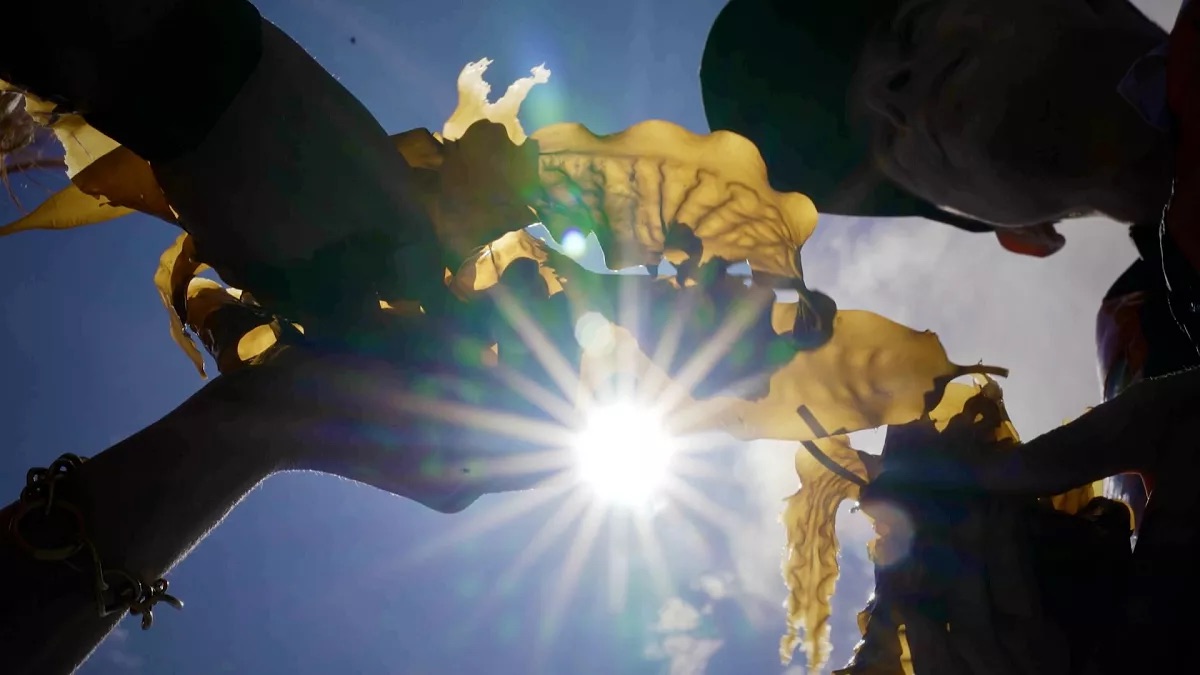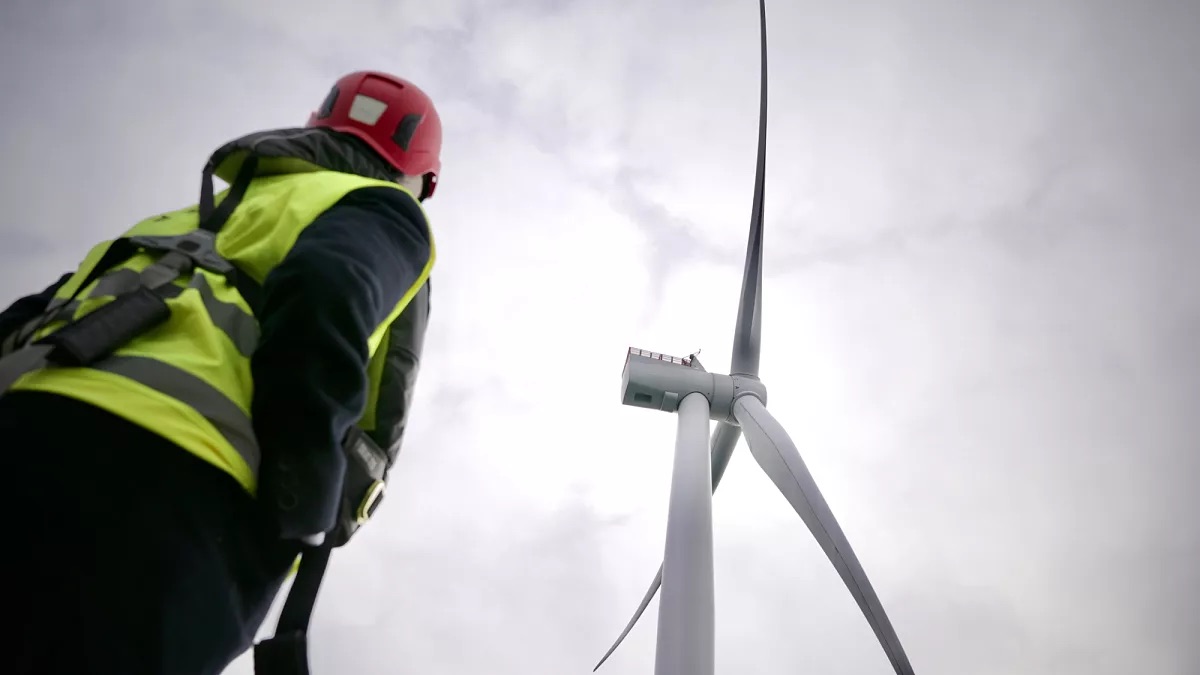Life on Earth as we know it wouldn’t be possible without the magnetic field protecting our planet.
But research shows it is weakening fast.
In the coming centuries, Earth’s magnetic field is expected to go through unprecedented changes.
And we are only just starting to understand this vital force of nature and its puzzling behavior.
Chris Finlay / Senior Scientist, DTU Space:
“Earth’s magnetic field is generated deep within the core of the planet. This is a restless place, with vigorous motions of liquid metal. And these motions of liquid metal generate electrical currents, and these currents give Earth’s magnetic field. It acts as a shield which deflects the solar wind, charged particles which stream away from the Sun, and it deflects them around the Earth, providing a safe bubble in which life exists.”
In the absence of a magnetic field, these charged particles would strip away the ozone layer, which protects the Earth from harmful ultraviolet rays.
Vital but invisible, this magnetic field can be seen on rare occasions when the solar particles collude with gas molecules, resulting in what’s known as auroras.
Many living organisms – from bacteria to insects or fish – seem to rely on Earth’s magnetic field to navigate.
Man has been doing that for a thousand years since the invention of the compass. Ship logs reveal historic records of Earth’s magnetic evolution.
With the magnetic north constantly moving, navy and merchant fleets had to regularly update their maps.
Ground-based observatories were built to keep track of the changes, leading to the scientific study of the magnetic field.
Jürgen Matzka / Senior Scientist, DTU Space:
“Here we are in a magnetic observatory which is 100 years old, and it is actually very typical for a magnetic observatory of that time. The observatories were built down in caves to keep the instruments at stable temperature. Everything is mechanical – there are magnets, there are moving mirrors, there are light beams and photographic paper to record the results.”
There are around one hundred observatories monitoring the Earth’s magnetic field, like this one in Brorfelde in Denmark.
Precisely calibrated magnetometers measure and record changes in the magnetic field across continents and islands.
Jürgen Matzka / Senior Scientist, DTU Space:
“What we can see here is actually very interesting, because a few days ago there was an explosion on the Sun, and with the solar wind hitting the Earth we measure these changes in the magnetic field. And you can see here in the upper part magnetic measurements from Greenland which show big changes of the magnetic field, whereas this curve down there is from Denmark, at lower latitudes, and here the magnetic field changes are much smaller than those that we observe in Greenland, closer to the geomagnetic pole.”
But ground observatories only cover parts of the ocean, leaving blank spots on geomagnetic maps.
That problem can be solved by putting the magnetometers into orbit. From space, satellites can accurately measure the magnitude and the direction of the magnetic field anywhere on Earth.
Magnetometers built by the engineers at the Danish National Space Institute are built using induction coil sensors.
Lars William Pedersen / Electronic engineer, DTU Space:
“Each of the sensors can measure the magnetic field going in the direction of the sensor. And if you combine these three sensors in all three dimensions, then you have a vector magnetometer. These sensors are used on ground-based observatories in instruments like this, but they’re also used in a much more compact version on satellites.”
Danish space scientists launched their first orbital magnetometer in 1999.
Data gathered by the Oersted satellite, which is still operational today, confirms that the magnetic poles are moving increasingly fast.
The satellite’s measuring instruments are hosted on an eight-meter long boom.
Nils Olsen / Professor of geophysics, DTU Space:
“Here we have the satellite body. Here we have one instrument, there we have another instrument measuring the Earth’s magnetic field. They are away from the satellite body, because in the satellite body we have electric currents, we have batteries, and we want to measure Earth’s magnetic field, and not the satellite’s magnetic field.”
A soon-to-be-launched mission by the European Space Agency is due to take a much deeper look at the Earth’s magnetic field.
Made up of a constellation of three identical satellites, the aim of the mission is to gather data both on the field’s composition AND its evolution in space and time.
Eigil Friis-Christensen / Swarm Lead Investigator, Director, DTU Space:
“Why do we have two eyes? We, mankind and animals, have two eyes because we want to see in three dimensions. And that is what you can do with two satellites, as a pair, which is a part of the Swarm project. But if you also want to see the fourth dimension, which is time, then you need three satellites.”
Two Swarm satellites will orbit close together at the same altitude, while the third will fly higher.
The spherical magnetometers onboard will provide new data on the Earth’s electromagnetic process – both beneath and above the surface of our planet.
The satellites have been specially designed to withstand the test of time: their mission life is estimated to last at least four years.
Nils Olsen / Professor of geophysics, DTU Space:
“The reason why we have this special shape is that this satellite is supposed to fly at relatively low altitudes, starting at 450 but then at 300, perhaps even 250 kilometer altitude, and we want to have a long mission to study how the magnetic field changes in time.”
It’s hoped the new data will help understand why the Earth’s shield is fading.
Some scientists believe it could be a sign of a magnetic pole flip – not an uncommon occurrence in the history of our planet.
Chris Finlay / Senior Scientist, DTU Space:
“The direction of Earth’s magnetic field has changed completely, so that the North pole and the South pole flipped from one hemisphere to the other. This has happened hundreds of times in Earth’s history.”
Such an event hasn’t occurred for almost 800 thousand years. Each reversal takes thousands of years or so to complete.
It’s hard to predict how it would affect life on our planet without better understanding all the components shaping Earth’s magnetic field.
Roger Haagmans / Swarm Mission Scientist, ESA:
“The Swarm mission is aiming at the best ever survey of the magnetic field sources that we know of, and basically it is aiming to measure the effect from the core field, which is the main contributor to the measurements itself, then also of the crust of the Earth crust, and also the mantle generates some signals. Outisde the Earth we have the ionosphere and the magnetosphere. Even a small contribution from our oceans currents.”
Carefully assembled and calibrated, the three satelites – each weighing almost half a ton – are ready to be sent into space.
Lift-off is expected in the first half of 2013.
Swarm will back up the European Space Agency’s fleet of Earth Explorers which focus on better understanding changes that occur on our planet.
Without its magnetic shield, Earth would probably resemble Venus or Mars, which are defenseless against the Sun’s deadly radiation.
Better understanding the magnetosphere is an essential part of global surveillance, and the Swarm mission may shed some light on possible links between solar activity and climate variations.
Philippe Goudy / Head of the Earth Observation Projects Department, ESA:
“All the Earth Explorer satellites are all bringing something special. A new measurement technique, a new concept for observing our environment.”
The GOCE satellite, for instance, has gathered enough data to provide the most accurate map ever of Earth’s gravity.
This map will not only help scientists better address the impact of climate change but it also offers new clues about the dynamics of the planet’s core.
Two other Earth Explorer satellites, CryoSat and SMOS, are taking a deeper look into the volume of polar ice.
By accurately measuring the change in ice thickness, CryoSat should help better understand the role ice plays in the Earth system.
The mission has produced the first high-resolution map of its kind reflecting a rapid change of this sensitive ecosystem: measurements show Arctic ice is thinning fast.
Philippe Goudy / Head of the Earth Observation Projects Department, ESA:
“It has given extremely precious results into monitoring not only the ice extent but also its thickness, its weight. And of course you know, when we’re talking climate change, monitoring the ice caps is of course critical.”
Backed up by ground validation, all this observation data helps improve our understanding of Earth’s changing environment… and our role in it.
Roger Haagmans / Swarm Mission Scientist, ESA:
“The Earth Explorers are really addressing challenges, on the one hand, related to climate change – but we cannot argue that they’re really looking at climate change because they are short-period but at aspects of it that might be of future relevance – plus of general global change. So the Earth magnetic field is not an essential climate variable but has had and still has a relationship to it. So, in that sense, we can say we look at global change variables over a huge range of science applications.”
While Earth Explorers not only help Man better understand the planet he lives live on, they also play a major role in better assessing the impact of human activity on global change.





